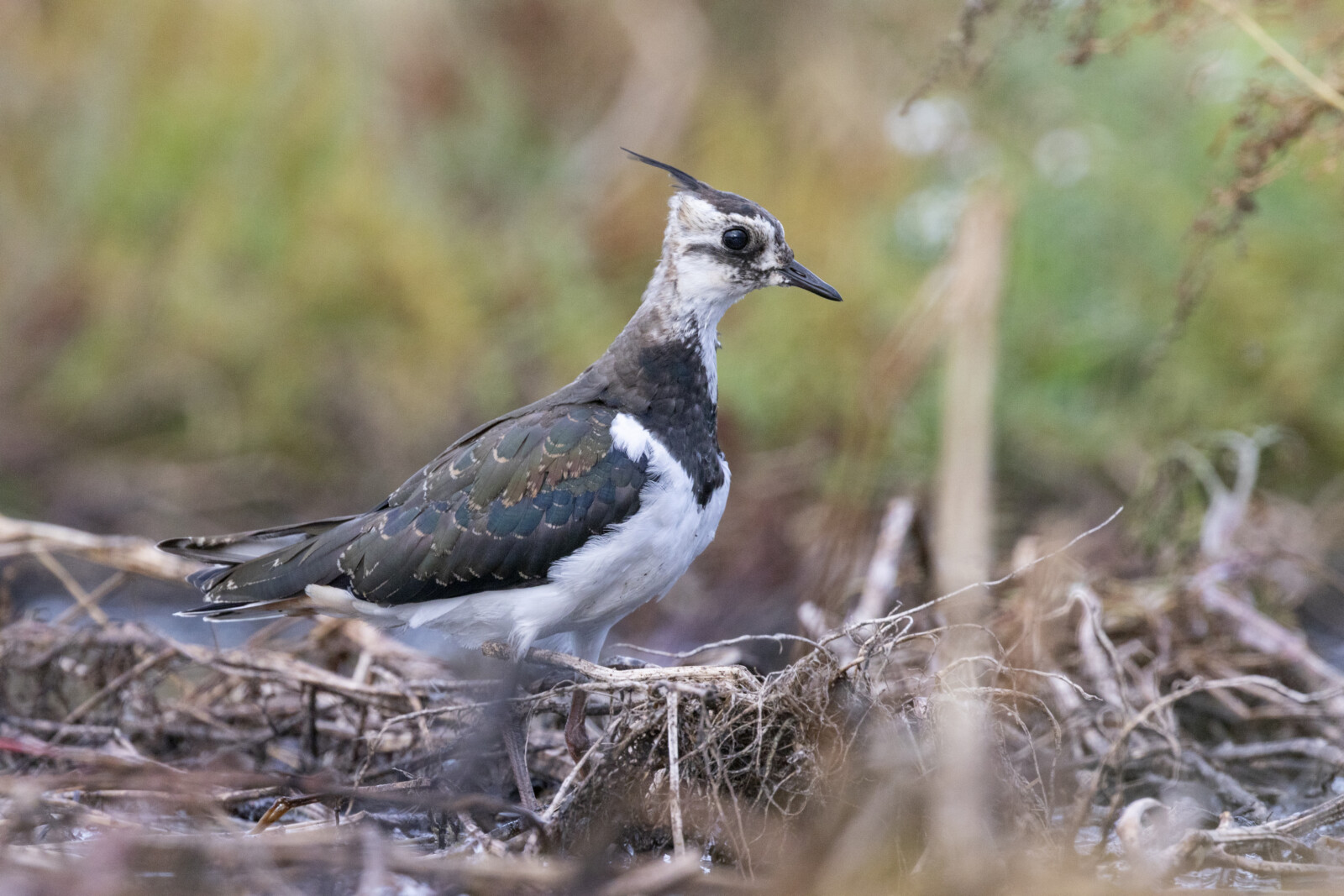Northern lapwing
- Northern lapwing
- https://linnuriik.ee/wp-content/uploads/2021/09/Kiivitaja-Kauro-Kuik-1024x683.jpg
- Keemu linnud
- https://linnuriik.ee/wp-content/uploads/2021/09/kiivitaja_salvestusVRunnel.mp3
Photo: Kauro Kuik
Introduction
lad. Vanellus vanellus (L.)
Estonian Kiivitaja
Also known as: peewit or pewit, tuit or tewit, green plover
Status in Estonia
Breeding and migratory bird.
Description
The Northern lapwing is a pigeon-sized wader with a stout body and a unique long thin tuft on its nape. The dark top part of the plumage looks slightly green and purple with a metallic sheen, while the underside is white. The wing tips are impressively wide with white feathers below and dark above. In the summer, male birds can be recognised by their longer tufts and pure black throats and faces, while females have shorter tufts and a smaller black mark on the front of their necks that is slightly mixed with white. In the winter, the feathers of adult birds at the front of the neck and beneath the chin are white, while the top part and covert feathers are slightly cream-coloured at the tips.
Size
Body length 28-31 cm, wingspan 67-72 cm, body mass 170-230 g.
Similar species
No similar species.
Distribution
Its breeding grounds extend from Ireland to England in the west to Southern and Eastern Siberia in the east, up to 70 degrees north latitude in Fennoscandia and 40 degrees north latitude in Spain. It also breeds in Turkey, Northwestern Iran, Kazakhstan, Mongolia and Northern China. Its wintering areas include Ireland and England, the Low Countries, Iberia, the Mediterranean (including North Africa), the Middle East, Southwest Asia, North India and South Korea, extending to Japan. It is a widespread and common breeding bird in Estonia. Similar to the population breeding in Europe, Northern lapwings from Estonia winter mainly in Western and Southwestern Europe and the Mediterranean countries, including North Africa.
Population
Estonia has 40,000–50,000 breeding pairs.
Occurrence in Estonia
It usually arrives in March, sometimes as early as February. It leaves in September/October.
Diet
It feeds mainly on insects and their larvae, slugs, earthworms, myriapods.
Habitat
The Northern lapwing is a typical open landscape bird that breeds in swamps, bogs, agricultural landscapes, meadows and pastures, beach meadows and islands; it nests almost everywhere, with the exception of large forested areas.
Nesting
After arriving and even during migration, you can see the courtship ritual flights, accompanied by a series of ‘pee-wit’ calls and a peculiar flapping of wings. The nest is fairly primitive, consisting of fine straw and a thin lining. From late May until early June, the female lays 3–4 light brown eggs with darker spots on them. After 25–34 days, chicks hatch and are immediately ready to explore the world. Chicks can fly after 35–40 days.
Conservation status and protection
Not under protection. The biggest threat is agricultural pollution, which includes pesticides and fertilisers.
Distribution and population in Lääne County
Northern lapwings are very common migrants and breeders in Lääne County. Northern lapwings taking breaks during migration, in both spring and autumn, can be seen in huge numbers on Matsalu National Park’s beach meadows and fields.
Northern lapwings nest in beach meadows, fields and bogs in Lääne County. Northern lapwings can be observed in numerous parts of Matsalu. The Põgari-Sassi coastal meadow and the Haeska birdwatching tower offer close-up views of these birds.
